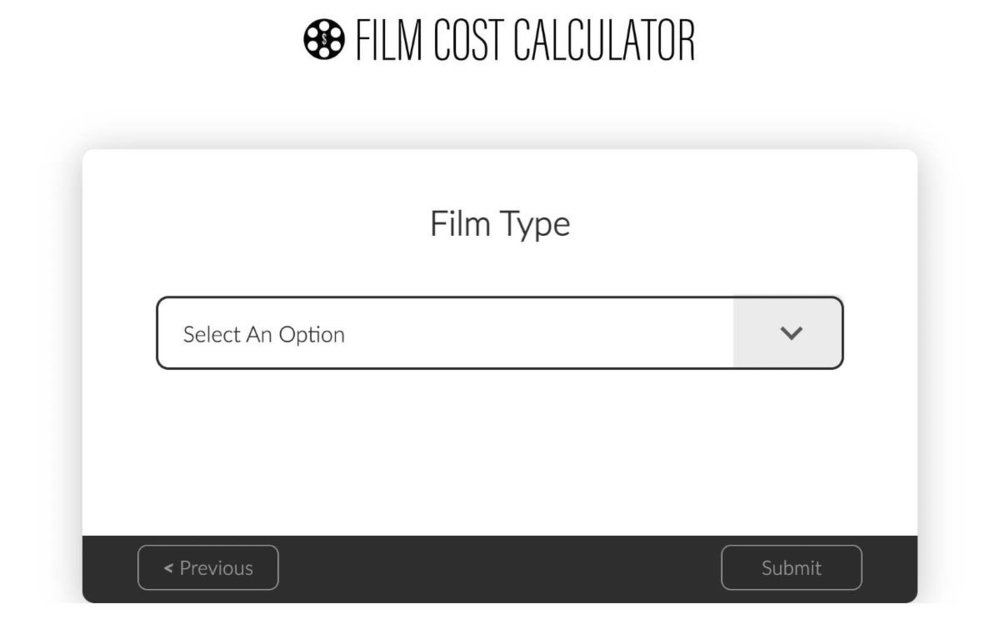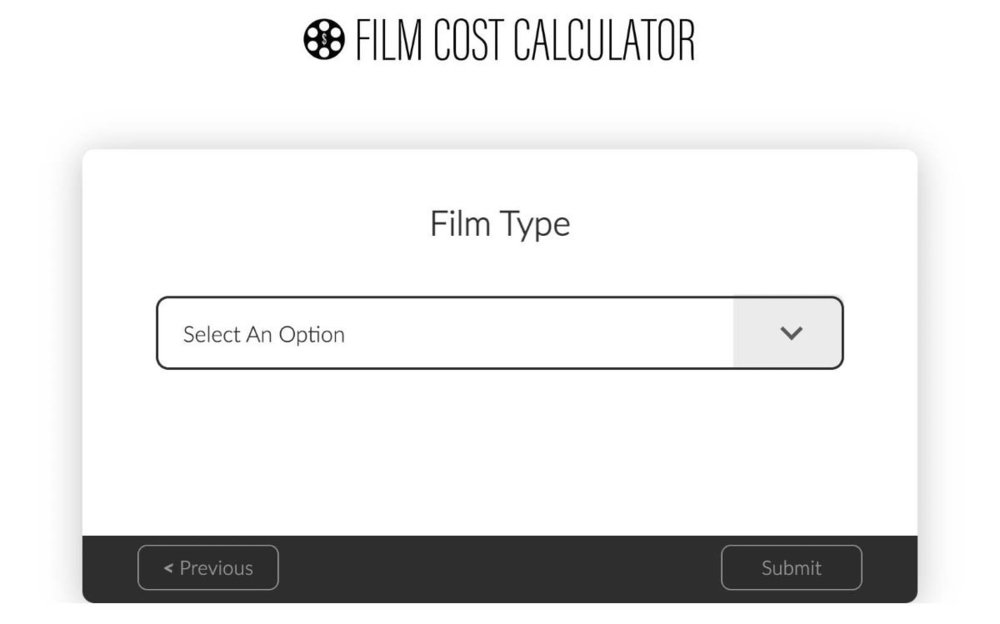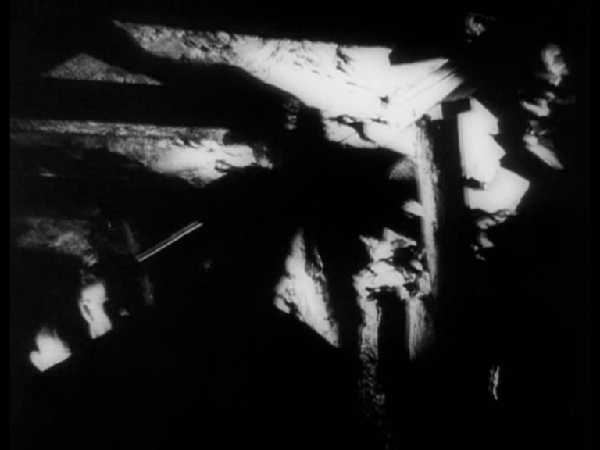Search the Community
Showing results for tags 'film stock'.
-
hey all. wanted to share this film cost calculator that I've been working on for a while. www.filmcostcalculator.com Eventually I'd like to add more equations that can list out alternative results to compare various perf options. Also working on a 1000' roll calculator. Hope it helps! Feel free to comment with any notes and ideas.
-
Hey everyone, Like most in this forum I'm a hardcore film nut, and like to learn more every day, to understand the medium and improve. Now with the resurge of 65 film for Kodak, and people ramping up hand rolling short ends into their cameras, I was curious to know what companies that actually made 65 mm film. Kodak still does, but did Fuji ever venture into the IMAX / 65mm size? Were there other options? And also, has anyone ever made a black/white 65 mm stock? (clearly a VERY specific look but...) C
- 19 replies
-
- 65 mm
- film stock
-
(and 2 more)
Tagged with:
-
hey all. wanted to share this film cost calculator that I've been working on for a while. www.filmcostcalculator.com Eventually I'd like to add more equations that can list out alternative results to compare various perf options. Also working on a 1000' roll calculator. Hope it helps! Feel free to comment with any notes and ideas.
-
Hi everyone! I know choosing different stocks almost always depends on the situation in which your shooting, and forgive me if I'm being to naive about the subject. I plan on shooting a short film soon using a Cannon Scoopic 16mm. To my simplest understanding, daylight stocks are tuned more to shooting in direct daylight, and Tungsten are tuned more to shooting under tungsten/photofloods etc. The film takes place mostly inside a house, and due to budget constraints, I plan to shoot on naturally available light, along with strategically moving lamps and other light sources that are already inside the house to fit my needs. Some scenes take place outside, during the day, and a few scenes outside during the night. For continuity within the look and feel of the film, what stock would you guys suggest shooting on? I know there are many variables and certain things you can't really predict unless on location in terms of lighting etc but what stock would be a generally good one to use in this type of situation? I originally planned on using 250D for pretty much the whole film, inside and out day and night, but now I'm doubting that strategy. Should I use a combination of stocks depending on the scene? And what recommendations would you suggest for day/night inside/outside? Like I said, If I could use one stock to shoot the whole film that would be great, just for continuity in look and feel, and so there are no mistakes when loading and shooting the film (loading the wrong stock for a certain scene etc) I read somewhere that 250D or a daylight stock would probably be the best general stock in this situation but I wanted to get some opinions first. I am also getting it telecined and color graded by professionals, so if there is a discrepancy in using one certain stock for the entire film, can they fix that while grading in post? What stock would give me the most flexibility in grading etc? Thank you!
-
Hi everyone, I think I have a some basic understanding on how LUTs or film stocks work in general, however it gets very confusing with all the variety of film emulation LUTs available and searching in Google or through thousands of topics doesn't really help. My question is how these LUTs actually work and how are they created? Are they a combination of negative stocks and print stocks? For example I see a lot of films shot on Kodak Vision 5207 and printed on 2383. According to Film Convert "FilmConvert applies a combined emulation for print, negative and a viewing simulation for projected film. Isn't the Kodak 5207 very different from the 2383 as far as the colorimetry is concerned? Thank you.
- 2 replies
-
- film emulation
- film stock
-
(and 2 more)
Tagged with:
-
Hello everyone, I've got some questions about materials and push-processing in the 30s. I'm working on a the British documentary "Coal Face" (1935) by GPO film unit. There is quite a bit of information on GPO in general but almost nothing on that particular film. I studied photography, so I could tell just looking at the film that some parts of it were heavily pushed. Since it's a scientific paper I can't just "know" it's the case, I have to bring arguments in favour of it. And while I know that the extreme graininess and high contrast are good indicators for push-processing, it would be even better if I could find further proof, and that's where my questions start. I'll include two screenshots from the film, that demonstrate the huge difference in quality. The first screenshot is from a scene above ground inside a building whereas the second was made in a coal mine. According to one of my sources [Enticknap, Leo. "Technology and the GPO Film Unit" The Projection of Britain: A History of the GPO Film Unit. Eds. Scott Anthony and James G. Mansell. London: Palgrave Macmillan on behalf of British Film Institute, 2011. 188-198.], the camera used by GPO was a Autokine with a 50mm/2in lens with a minimum aperture of f1.9, most likely one of these: https://www.scienceandsociety.co.uk/results.asp?image=10405810 Does anyone know where I could find out which stock they used? At the time most likely panchromatic, but that's about as far as I got. The other thing is, I found lots of information for photography and push-processing but next to nothing on film and push-processing, though I'm assuming it must have been quite common, especially in the documentary movement. If anyone knows of any (quotable) source for this kind of information, it would be a great help. I found some websites but a published book or an article in a journal is always preferable. Thanks a lot!
- 4 replies
-
- historical
- 30s
-
(and 3 more)
Tagged with:
-
Im planning on shooting a double feature sometime soon on 16mm and I was wondering what the best film stock is for emulating the colors you see in movies like The Texas Chainsaw Massacre, The Evil Dead, Etc.
- 3 replies
-
- 16mm
- Grindhouse
-
(and 1 more)
Tagged with:
-
Hi There! I'm selling two batches of expired, unopened 16mm film stocks. Most are vintage stocks. Shipping is free and they would be shipped using the US postal service only to the lower 48 states. Batch 1: 12 Rolls of Expired Vintage 16mm Film Stocks - 100' rolls $119.00 5 X Vision 3 500T/7219 2 X Vision 3 200T/7213 2 X Kodak ESTAR Base HQ Microfilm 1 X Kodak EXR 50D/7245 1 X Kodak Ektachrome/7242 1 X Kodak Kodachrome II One of the Vison 3 500T boxes has the paper worn and torn off but appears completely unopened. Buy: https://www.etsy.com/listing/650732138/12-rolls-of-expired-vintage-16mm-film Buy: https://www.etsy.com/listing/650732138/12-rolls-of-expired-vintage-16mm-film Batch 2: 11 Rolls of Vintage Expired 16mm Film Stocks - 100' rolls $139.00 3 X Kodak Ektachrome/7242 (perforated both edges) (100 ft) 3 X Kodachrome 25 (100 ft) 2 X Eastman Ektachrome Commercial / 7252 (100 ft) 2 X Eastman Color Negative / 7254 (perforated both edges) (100 ft) 1 X Kodachrome II (100 ft) Buy: https://www.etsy.com/listing/653128152/11-rolls-of-vintage-expired-16mm-film Buy: https://www.etsy.com/listing/653128152/11-rolls-of-vintage-expired-16mm-film
- 2 replies
-
- film
- film stock
-
(and 2 more)
Tagged with:
-
Hello everyone! I am a Phd student and I am currently writing my thesis about the cinematography of Terrence Malick's films; I would like to ask if anyone knows what film stock was used in the shooting of Days of Heaven. So far I have only been able to find on the internet that Néstor Almendros used a "new Eastman ultra light-sensitive stock negative"...
- 35 replies
-
- Film Stock
- Days of Heaven
-
(and 2 more)
Tagged with:
-
Hi Everybody, I've just acquired an Arri SR2 Advanced and wanted to know if someone knows where I can find dummy film stock ? I need to practice a bit before starting to shoot something real. I live in Switzerland and we don't have labs and film stock anymore in here, everything is closed and out of stock... Let me know. Thank you
-
Hello Group, Just watched "Atonement" (2007) and it immediately looked like Fuji to me. It had those typical saturated and "airy" colors - as opposed to the more "earthy" colors usually found on (Eastman) Kodak stocks from EXR through Vision3. I know that's a broad generalization, but words can say only so much. IMDB states that it was shot on Kodak Vision 2, but somehow it doesn't look like it at all. Perhaps the digital color grading changed it dramatically without looking "tweaked". With recent digital color grading it is hard to tell anyway which film stock was used, especially when the grading is heavy. Still, my bet would have been Fuji (I know there were different neg stocks, not only regarding speed (ASA/ISO), but to my eyes this almost screams Fuji, both in the daylight and in the night time footage. Any information about how this (great) look was achieved and which stock was used is highly appreciated. Thanks in advance, Christian
-
Question about refrigerated film stock
Alejandra Saldivar posted a topic in Film Stocks & Processing
Hello everyone, In March of this year i bought from kodak 3 rolls of 16mm film stock 500T (400 ft. each). They were intended to use for a shortfilm, but we ended up using only one. The two remaining have been keept refrigerated ever since, both are unopened. I'm planning to use this rolls for a stopmotion animation, but i wont be able to start shooting until May 2018. In the meantime i have to transport this rolls to another place to keep them storaged. So my question is: Could the rolls be damaged if i keep them out of the refrigeration for a few hours and then refrigerated again? From the information i've gathered on the internet apparently the film is in good conditions to be used, since the rolls are relatively recent and have been refrigerated. But correct me if i'm wrong, i'm a newbie using film stock :) Thank you for your help! -
Hello everyone! I am a Phd student and I am currently writing my thesis about the cinematography of Terrence Malick's films; I would like to ask if anyone knows what film stock was used in the shooting of Days of Heaven. So far I have only been able to find on the internet that Néstor Almendros used a "new Eastman ultra light-sensitive stock negative"... Thanks!
- 3 replies
-
- Days of Heaven
- Terrence Malick
-
(and 2 more)
Tagged with:
-
Hello, I am preparing to shoot a project where I what to use both 16mm and 35mm stocks. The plan is to shoot the CS to MS sized shots in16mm (7203) and the wider angle shots in 35mm. I am looking for advice about which 35mm stock to use that will best match the 16mm 7203 in grain, contrast and color. Any suggestions would be much appreciated. Thank you. Steven Holloway steven@shfilms.com
- 17 replies
-
- Film stock
- 16mm
-
(and 1 more)
Tagged with:
-
Hello group, Just got a 100ft roll of 16mm 1R Eastman 7222 Double-X neg stock. The label states "© 2002". Also bought supposedly fresh Double-X stock very recently and the label says "© 2009". Q 1: anyone know what's the deal with the dates (same with Ektachrome 100D BTW)? Q 2: should I compensate for sensitivity loss with the 2002 Double-X stock? I know that overexposing Double-X is bad - not like current Kodak color neg at all. Love the classic look of Double-X with its typical 'vintage' grain pattern ranging from shadows all the way up to highlights. Any reply/tips very highly appreciated. Christian
- 26 replies
-
- film stock
- Super 16mm
-
(and 3 more)
Tagged with:
-
Hi everyone, I'm helping with my friend's project for a cinematography class. We'll be using an arri S. Unfortunately he got 500t film and we will be shooting in daylight with an 85 filter. I wanted to ask if anyone here had any suggestions for our shoot, and my friend is concerned about what the f-stop should be set at with such conditions. Thank you.
- 10 replies
-
- film stock
- 500t
-
(and 1 more)
Tagged with:
-
What would be a good place to buy short ends in large quantities, at a good price, perhaps locally. Also I've some digital restoration on new super8 footage, it included sharpening, But It didn't have the artificial look I'm used to seeing with that kinda stuff. I'd like to do it with 16mm. Here it is done with avisynth. Thanks
-
Has there ever existed a film stock equivalent or similar to what Fuji Velvia 50 was in the still-photography business?
- 3 replies
-
- color
- saturation
-
(and 4 more)
Tagged with:
-
Has there ever existed a film stock equivalent or similar to what Fuji Velvia 50 was in the still-photography business?
-
- color
- saturation
-
(and 4 more)
Tagged with:
-
Hi, I'm looking to shoot my first 16mm short with a Bolex H-16. Going for a cinema-verite/60's avantgarde feel in terms of low light/natural light. Nearly all of the shots will be interior at night. Going for a look very similar to the scene below from 1:40 to 2:07 Curious to see if anyone can narrow down what film stock was used for this (or what similar stocks made today could work in a similar way)?? Also any idea what f.stop he was shooting at in said scene would be helpful as well! Thanks!
- 19 replies
-
- film stock
- 16mm
-
(and 3 more)
Tagged with:
-
Hello everybody, Being a "working on 16mm film" lover (after struggling with the film purchase...old stock usually) I start thinking on how to develop this 16mm NEGATIVE B&W film market (better say, to revive it hopefully once and for all!) In conclusion, AS WE SPEAK, I am able to produce the following type of 16mm film, FRESH and in ANY quantities! Type: 16mm negative Black&White Film speed: 100ASA/21DIN, 200ASA/24DIN, 400ASA/27DIN Perforation 1R Winding: B on standard plastic core, length: 400feet/roll packed: sealed tin can (2 rolls/can! = 800feet/can) The film is guaranteed to work within standard specs/each speed (specs printed also on leaflet). Price: $160/can (2x400'=800') I need you to help me with the following survey (and also I'm waiting for your questions!): 1. Is this an affordable price? he he 2. Which film speed you use most ? 3. How many cans you will buy as the first order? 4. How many cans (800' of film) you think you'll buy/ month at this price? 5. Are you interested in buying the processing chemicals for it? Please replay to this post as in the bellow example: 1. yes 2. 200 3. 2 4. 4 times/month 5. yes Please ask as many questions you like!! I'm really interested if this endeavor of mine might have a future! Thank for looking! Valerian
-
Hello, I'm working on a project for 2015 that I want to shoot on black and white 16mm film. I've watched several films online shot with Tri-X film and a few on Double X but the blacks are so dark (I know, they're supposed to be). :) These are great film stocks but for my film I kinda don't want the blacks to be so black. For example, one of my favorite films is the 1956 version of "The Bad Seed" and as you can see from the photos the black and white image is not so dark. The blacks aren't so black like they are in the modern stocks. I might not be explaining this well. You can see from the fireplace below that there is black and that the liquor is obviously a dark color but the overall scene isn't dark on the edges and has an even grey scale tone. Even the images with more dark areas aren't as black as what I've seen in modern B&W stocks. Is it possible for me to achieve this lighter toned black and white imagery with modern black and white film stocks? Or would I have to shoot on color film and do a grey scale/desaturate/black and white treatment on it in post? This discussion lost me a bit: http://www.cinematography.com/index.php?showtopic=50105&hl=%20black%20%20and%20%20white&page=2 I think someone in that post had a great idea of shooting with a still film camera using the film stock I'd like to use with the setup I plan to shoot and see how that looks. I'm going to try that.
- 11 replies
-
- black and white
- 16mm
-
(and 1 more)
Tagged with:
-
I just found out that Film Source LA have no 16mm short ends on hand, and virtually no 35mm short ends, whatsoever. They recommended Comtel in Burbank, but the owner there wants to sell his short ends for about $10 less than what Kodak charges for new film. I was literally quoted $150 for a 400 ft. roll of Vision 3 50D stock. Kodak's price is $160.80. Does anyone know of a good source for short ends? Looking for a place that tests the film with a densitometer, and doesn't keep old stock on hand for years at a time. -Jerry Murrel Little Rock, AR
- 3 replies
-
- film
- film stock
-
(and 1 more)
Tagged with:
-
Hey guys, I'm looking for a bit of advice, stock-wise. We're shooting the first ten minutes of our feature film this month and unfortunately my DP is as unfamiliar with film as I am. For outdoor scenes, I'm looking into the KODAK Vision 3 250D. One shot in particular, we transition from the roof of our building to the inside of our apartment. I dug up an article on Fuji's old 250. The tester claimed it would work very well under such a transition. I'm assuming that Kodak can achieve the same result? http://www.fujifilm.com/products/motion_picture/lineup/eterna_vivid250d/demo/ what would you recommend, lighting-wise, once we hit the interior. In the same one-shot, we travel quite aways around the apartment. Sometimes, windows are plentiful, sometimes not so much. for everything else, I thought we could use kodak 500t. but I don't know how that would match up either. does anyone know if I'm looking in the right places? if not, can you point me in the right direction. (i also considered throwing an 85 on something like a 200t to achieve the same effect, but I'm new at this, and I don't really know what I'm talking about) thank you for your help, for more information on our movie check us out at po.st/sowhat
-
Greetings, I was recently given a Canon 514XL camera. I am familiar with still film in general but am not clear on how this camera works with various stocks and I have no manual. I know the cam works as I have run a roll of Tri-X through it and got it developed successfully. That being said I am not interested in taking black and white at this time. I am going to Las Vegas in January and want to get a couple cartidges of color film to shoot outdoors on the strip (during the day) as well as inside on various casino floors. I have been browsing the forums and it seems like Vision3 50D would be good for daylight/outdoor and possibly 200T or 500T for inside, but I am not sure as I have no experience with either. What is confusing me is how my particular camera will treat these films. I have been reading about needing an 85 filter for the T films, but I'm not sure if the 514XL has that built-in or not? I'm not even sure if the cam will support these cartridges due to the issue of setting the ASA correctly with the notches, etc. In addition, I've read on this forum that it might be better to just use the higher-ASA rated T films with a screw on filter instead of using two different stocks. As far as grain goes, I honeslty don't care. I like grain (within reason) and this is a personal project. It adds a certain character so reducing grain across lighting scenarios is not my primary goal. If it's clean, great. Light to moderate grain, great also. I am really hoping a nice gentle soul on this forum will offer some guidance to an amateur who is new to this area. I was going to post in the new user forum but this sub-forum seemed more approriate. Mods can move thread if necessary. Thanks!











